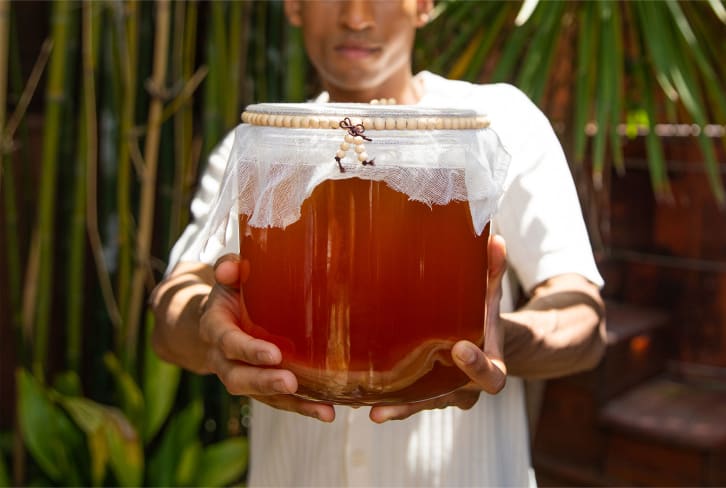Advertisement
An RD's Favorite Anti-Inflammatory Canned Food + How To Use It


It's been nearly a year since people started stocking up on toilet paper, hand sanitizer, and canned goods to prepare for an unknown amount of time in lockdown. While that scarcity mindset may have subsided, nonperishable foods have been, and always will be, a pantry staple.
So, we asked mbg Collective member and registered dietitian Jess Cording, M.S., R.D., CDN, what her go-to canned food is.
"I really love sardines," Cording answers. "I first discovered them through a random craving when I was under a lot of stress and suddenly wanted to eat them all the time."
Benefits of sardines.
Not only are tinned fish an affordable source of protein, but they're also sustainable and don't require any preparation or cook time. Adding tinned fish to your diet provides plenty of health benefits, as well.
Tinned sardines tend to be lower in mercury than many other types of fish and are considered one of the "best choices," in terms of seafood1, according to the U.S. Food and Drug Administration (USDA).
"My personal favorite is the boneless variety packed in olive oil," Cording says. "If you like a little crunch, the kind with the bones still in is great."
While sardines packed in oil may have a bit more flavor, the variety in water is still a good source of nutrients. "In both cases, you're getting a good amount of protein, vitamin D, and anti-inflammatory omega-3 fatty acids—and the olive oil provides heart-healthy monounsaturated fats," she explains.
The brain is made of about 60% essential fatty acids2, and the main source of omega-3s in sardines is called docosahexaenoic acid (DHA), which can help to repair brain cells3 and support cognitive functioning. DHA is not found in plant-based food sources, so incorporating sardines into your meals is a simple way to enhance brain health.
How to eat sardines.
The USDA guidelines recommend eating two to three servings of low-mercury fish, like sardines, per week. They're delicious in pasta dishes, with cheese and crackers, or as a snack straight out of the can. "I like to mash the sardines with a fork and toss them into a salad," Cording tells mbg.
Bottom line.
Whether you're following a pescatarian diet or simply looking for more affordable, sustainable, and shelf-stable sources of protein, adding canned sardines to your grocery list is a great starting point.
Watch Next
Enjoy some of our favorite clips from classes
Enjoy some of our favorite clips from classes
What Is Meditation?
Mindfulness/Spirituality | Light Watkins
Box Breathing
Mindfulness/Spirituality | Gwen Dittmar
What Breathwork Can Address
Mindfulness/Spirituality | Gwen Dittmar
The 8 Limbs of Yoga - What is Asana?
Yoga | Caley Alyssa
Two Standing Postures to Open Up Tight Hips
Yoga | Caley Alyssa
How Plants Can Optimize Athletic Performance
Nutrition | Rich Roll
What to Eat Before a Workout
Nutrition | Rich Roll
How Ayurveda Helps Us Navigate Modern Life
Nutrition | Sahara Rose
Messages About Love & Relationships
Love & Relationships | Esther Perel
Love Languages
Love & Relationships | Esther Perel
What Is Meditation?
Box Breathing
What Breathwork Can Address
The 8 Limbs of Yoga - What is Asana?
Two Standing Postures to Open Up Tight Hips
How Plants Can Optimize Athletic Performance
What to Eat Before a Workout
How Ayurveda Helps Us Navigate Modern Life
Messages About Love & Relationships
Love Languages
Advertisement

How To Use Food To Recover From Autoimmunity: An MD's Top 4 Tips
Sara Szal Gottfried, M.D.










